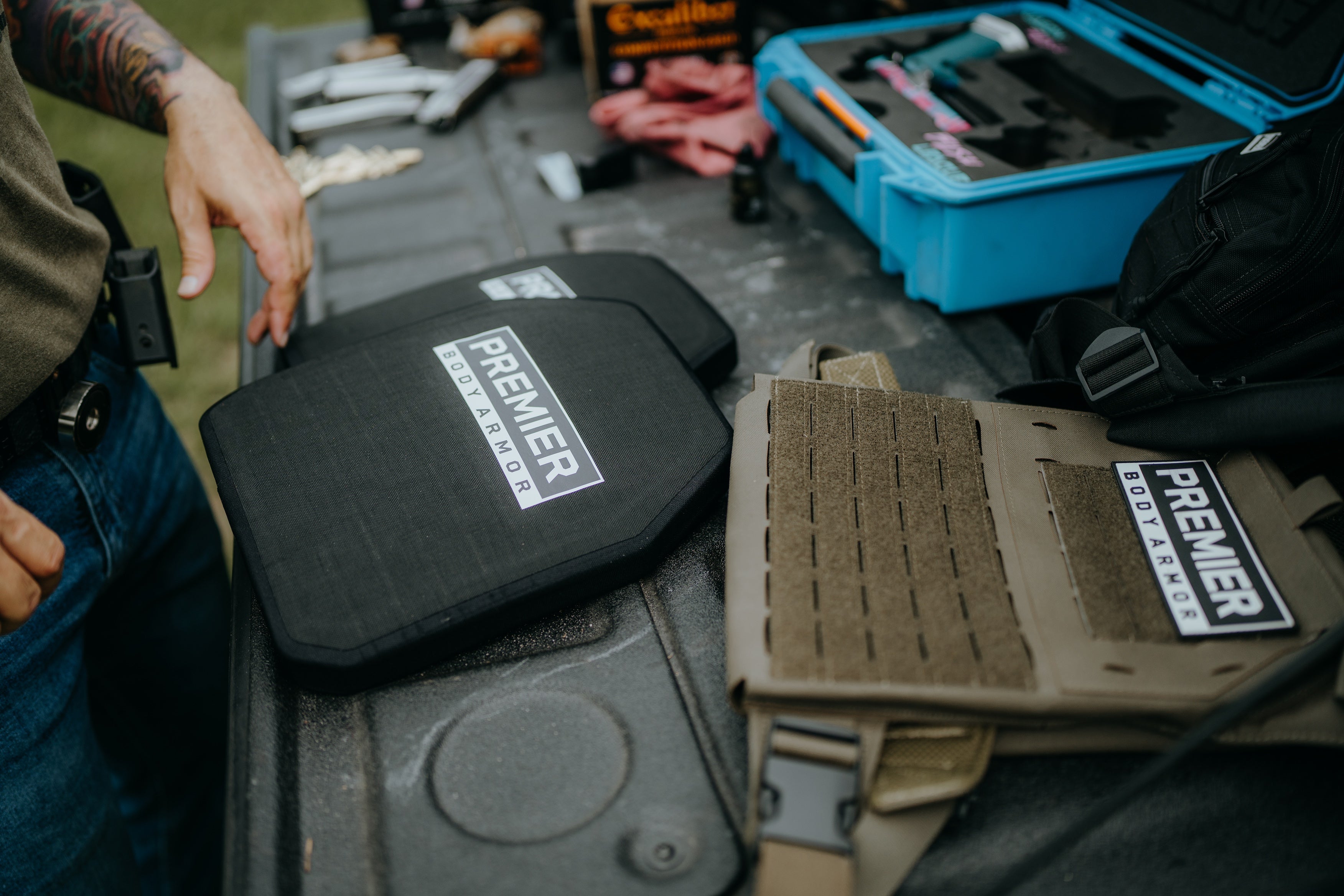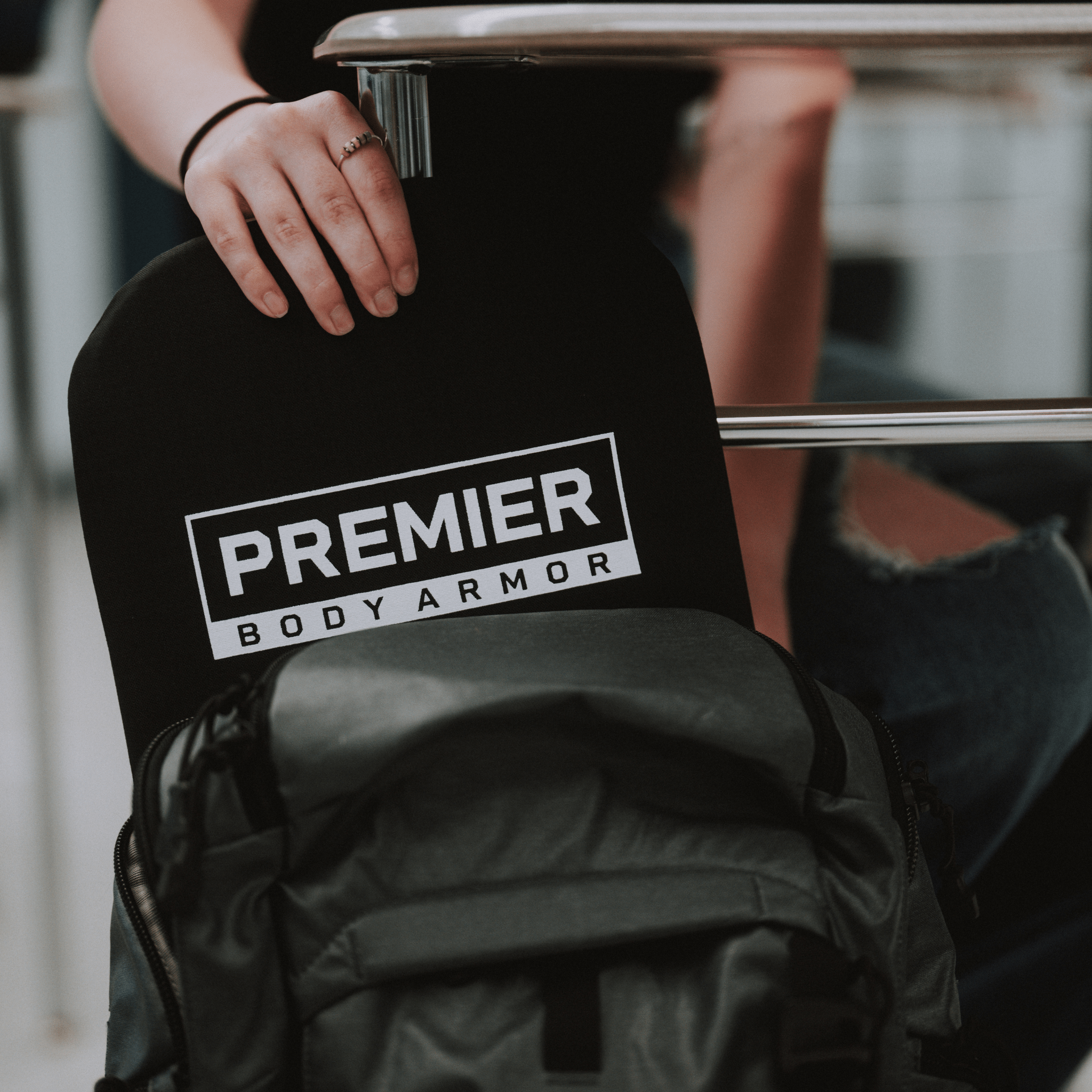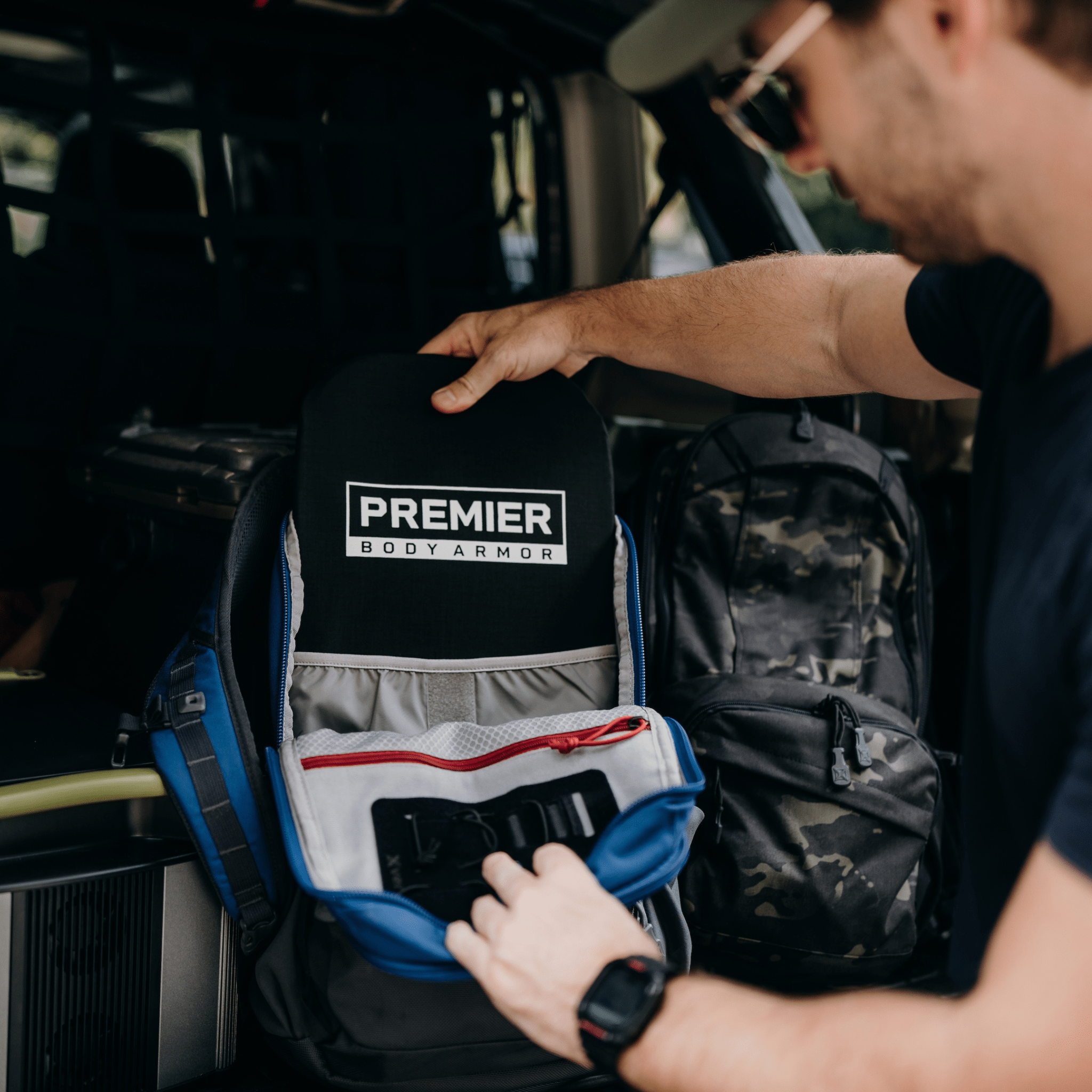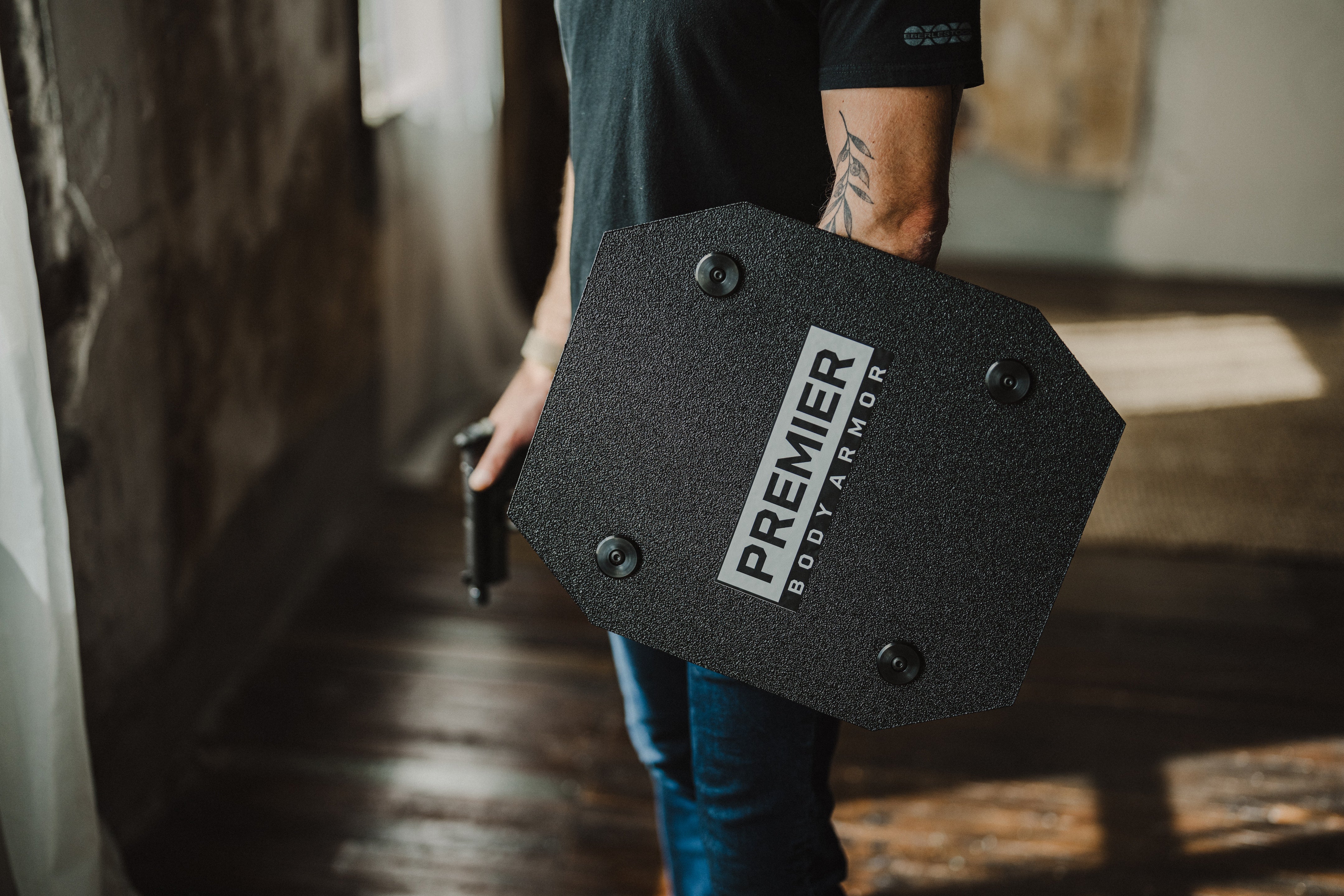The Complete List of Bug Out Bag First Aid Kit Essentials
When disaster strikes, time is everything, and being prepared can make all the difference. While food, water, and shelter often top the list of emergency priorities, medical readiness is just as critical. A well-stocked bug out bag first aid kit ensures you're equipped to handle injuries, manage pain, and keep yourself or your loved ones moving when professional help isn't immediately available.
Whether you're preparing for a hurricane, wildfire evacuation, or long-term survival scenario, your first aid kit should be more than an afterthought. This guide covers exactly what you need to include, how to tailor it to your needs, and how to choose the right setup for real-world emergencies.
Introduction to Bug Out Bag First Aid Kits
In a genuine emergency, medical help may be minutes or even hours away. That’s why every bug out bag needs a dedicated emergency first aid kit. Whether you’re facing a natural disaster, civil unrest, or evacuating from your home, having the right medical supplies can mean the difference between a manageable injury and a life-threatening situation.
A bug out bag first aid kit is not just for survivalists or preppers. It's essential for anyone who takes emergency preparation seriously. You don’t need to carry an entire field hospital, but you do need to be equipped to handle typical and serious injuries alike - things like bleeding, burns, sprains, or infections. Your first aid gear should be compact, comprehensive, and tailored to your environment and skill level.
A well-packed kit gives you the confidence to act decisively. Whether you’re treating yourself, a family member, or a stranger in need, a well-stocked first aid bug out bag ensures you’re never helpless.
Importance of a First Aid Kit in Emergency Situations
When emergencies strike, access to medical care is often delayed or unavailable. Injuries that would typically be minor, such as cuts, burns, or sprains, can quickly become serious if left untreated. That’s why having a reliable bug out bag first aid kit list is more than just smart; it’s a survival essential.
Whether you’re navigating rough terrain, evacuating during a natural disaster, or dealing with unexpected trauma, your ability to respond immediately can prevent infection, minimize pain, and preserve mobility. Including a first aid kit in your bug out bag ensures you're not caught unprepared when every second counts. It’s one of the most essential tools you can carry.
Essential Items for a Bug Out Bag First Aid Kit
When it comes to emergency preparedness, a well-equipped bug out bag first aid kit should be compact, lightweight, and capable of handling a wide range of medical needs. From minor cuts to severe trauma, the right supplies can help you respond quickly and effectively in the field. Whether you're building your kit or evaluating a premade one, it’s essential to understand both what to include and why.
Here’s a quick checklist of bug out bag first aid kit contents you should always pack:
-
Tourniquet
-
Gauze rolls and pads
-
Compression bandages
-
Adhesive bandages (various sizes)
-
Antiseptic wipes
-
Alcohol pads
-
Antibiotic ointment
-
Medical gloves
-
Burn cream or gel
-
Splint (SAM or foldable)
-
Ace bandage
-
Triangle bandage
-
Moleskin (for blister care)
-
Pain relievers (ibuprofen, acetaminophen)
-
EMT shears
-
Tweezers
-
Medical tape
-
Safety pins
This small first aid kit list forms the foundation of any good compact first aid kit. In the following sections, we’ll break down these items into categories, explaining their role, use cases, and why they belong in every serious first aid bug out bag.
Trauma Care Essentials
Traumatic injuries are among the most dangerous situations you may face during an emergency evacuation. Whether it’s a deep laceration, gunshot wound, or severe bleeding from an accident, your bug out bag emergency kit must be equipped to handle them. The goal is to stop bleeding, stabilize the injury, and buy time until advanced medical care becomes available.
Here are the core trauma care items your bug out bag first aid kit contents should include:
-
Tourniquet: A life-saving tool used to stop arterial bleeding from limbs. Choose a proven model like the CAT or SOFTT-W, and learn how to apply it properly; it could save your life or someone else’s. For those inexperienced or younger, a more intuitive zip-tie design tourniquet may be more useful in a stressful situation.
-
Gauze Rolls and Pads: Use gauze to pack deep wounds, absorb blood, and protect exposed tissue. Look for sterile, individually wrapped options.
-
Compression Bandages: Also known as Israeli bandages, these are designed to apply direct pressure and stay in place, making them ideal for severe bleeding.
-
Medical Gloves: Nitrile gloves protect both you and the patient from bloodborne pathogens. Always pack multiple pairs.
-
Antiseptic Wipes and Alcohol Pads: Clean the wound site before dressing to reduce the risk of infection.
-
Adhesive Bandages: Useful for smaller cuts, scrapes, and minor bleeding.
These trauma care items should be stored near the top of your first aid bug out bag for fast, one-handed access. When seconds count, accessibility matters as much as content.
Mobility Injury Aids
While traumatic bleeding gets a lot of attention in survival kits, mobility-related injuries are far more common, especially during evacuation or long-distance travel. Twisted ankles, sprained knees, or overuse injuries can quickly become debilitating without the right gear. That’s why every bug out bag first aid kit should include tools specifically designed to stabilize joints and keep you moving.
Key items to include:
-
Splint (SAM or Foldable): These are lightweight, moldable splints that can be shaped to immobilize fingers, wrists, arms, or legs. They’re reusable and take up minimal space, perfect for a compact first aid kit.
-
Ace Bandage: This elastic wrap is excellent for stabilizing sprains, reducing swelling, and securing cold packs or splints. It’s also useful for general compression.
-
Triangle Bandage: A versatile piece of cloth that serves as a sling, pressure wrap, head bandage, or even an improvised tourniquet in a pinch.
When you’re on foot, injured limbs can slow you down or stop you altogether. These bug out bag first aid kit contents help ensure that injuries don’t become full-on liabilities in the middle of a critical evacuation.
Building or Buying Your First Aid Kit
Once you know what goes into a proper bug out bag first aid kit, the next step is deciding whether to build your own or buy one preassembled. Both options have benefits, and the right choice depends on your experience level, time, and specific needs.
A DIY kit gives you complete control over every item, ensuring that your gear is personalized for your environment, health concerns, and skill set. On the other hand, buying a premade kit provides speed and convenience, and often includes components you may not have considered.
Let’s break down the pros and cons of each approach.
Advantages of Premade First Aid Kits
Premade kits are perfect for anyone who wants a grab-and-go solution without the hassle of sourcing individual components. A high-quality, basic first aid kit will include most (if not all) of the essentials, organized in a way that’s easy to access under stress.
Benefits include:
-
Time savings: No need to spend hours researching or shopping for supplies.
-
Professional organization: Kits are typically laid out in logical groupings for fast retrieval.
-
Broad coverage: Most reputable kits are designed by medical professionals or survival experts who understand real-world emergencies.
Whether you're building out a full bug out setup or looking for a quick car or home option, premade kits are a smart, reliable starting point. Check out our Car First Aid Kit Guide for another great resource.
Customizing Your First Aid Kit
Building your first aid bug out bag gives you unmatched flexibility. You can prioritize based on your health concerns, terrain, expected travel distance, and group size. It also ensures you’re familiar with every single item, because you chose it.
Customization is ideal for:
-
Families with children, elderly adults, or pets
-
Hikers or off-grid travelers who face environmental hazards
-
People with chronic conditions requiring prescription medications or specialty gear
-
Advanced users who want specific brands or components
Just be sure to balance quantity with packability. A kit that’s too bulky or disorganized might get left behind or become useless in a high-stress scenario. Label compartments, rotate expired items, and practice using your gear before an actual emergency.
Specialized First Aid Items for Bug Out Scenarios
Basic supplies will handle minor cuts and bruises, but survival situations demand more. In high-risk scenarios where evacuation may take days or medical help is completely unavailable, you’ll need advanced tools that go beyond the basics.
A fully equipped bug out bag first aid kit should include specialized trauma gear, mobility aids, and general-use items that support both immediate care and long-term health.
These supplies elevate your kit from “basic survival” to “field medic” level. Whether you're preparing a civilian IFAK first aid kit, a tactical response pack, or just expanding your hiking first aid kit contents, these categories ensure you're ready for serious challenges in the field.
Trauma First Aid Items
These items address life-threatening injuries that require immediate intervention:
-
Clotting Agents (QuikClot, Celox): These hemostatic agents are essential when direct pressure isn’t enough. They work fast and save lives, especially in gunshot, stabbing, or high-velocity trauma scenarios.
-
Burn Salves and Hydrogel Dressings: Burns from fire, chemical exposure, or sun overexposure need immediate care to prevent infection and minimize long-term damage.
-
Chest Seals: Penetrating chest wounds can lead to collapsed lungs or tension pneumothorax. A vented seal allows trapped air to escape while sealing the injury, vital for any tactical or rural survival kit.
-
Heavy-Duty Gauze Pads: Larger and more absorbent than standard dressings, these are used for wrapping limbs, padding large wounds, or packing deep cuts.
-
Elastic Wraps: Reinforce dressings, secure limbs, and provide compression. They’re also helpful in tandem with splints and other mobility supports.
Mobility First Aid Items
Mobility is everything during a bug out. If you can’t walk, you can’t escape. These items help prevent minor injuries from becoming movement-stopping problems:
-
Moleskin: Prevents and treats blisters caused by prolonged walking or wet boots. In field conditions, foot care is survival.
-
Triangle Bandage: This classic multi-tool can be used as a sling, pressure bandage, tourniquet, or even a head wrap. Lightweight and versatile.
-
Cold Packs: Ideal for sprains, bruises, or inflammation. Look for instant-use versions that require no refrigeration.
-
Blister Pads & Tape: Apply at the first sign of hot spots. Preemptive use prevents downtime and painful, infected wounds.
These bug out bag first aid kit contents are particularly crucial in rugged or mountainous terrain, where even a sprain can leave you stranded.
General First Aid Supplies
These may not be flashy, but they’re vital for hygiene, comfort, and basic illness management during prolonged emergencies:
-
Pain Relievers (Ibuprofen, Acetaminophen): Relieve muscle fatigue, reduce fever, and manage pain to maintain focus and morale.
-
Anti-Diarrheal (Loperamide): Food or water contamination can cause dehydration. These keep your system stable and functioning.
-
Antihistamines: For insect stings, food allergies, or environmental triggers like pollen or mold.
-
EMT Shears: Heavy-duty scissors that can cut through denim, webbing, or light armor. Critical in trauma scenarios.
-
Tweezers: Remove debris, splinters, or embedded glass, especially important in post-disaster environments.
-
Thermometer: Track illness trends and differentiate between mild fatigue and dangerous infection.
-
Medical Tape & Safety Pins: Use to secure gauze, splints, or improvise repairs for torn gear and clothing.
These small tools play a big role in keeping you healthy, alert, and functional during extended emergencies. Many are also recommended in Stop the Bleed Program materials and medical preparedness courses.
Selecting the Right Bag for Your First Aid Kit
A high-quality emergency medical kit isn’t just about what’s inside; it’s also about how it’s carried. The best gear in the world won’t help if it’s buried at the bottom of your pack or scattered loosely in Ziploc bags. Choosing the right container for your bug out bag first aid kit is critical to both organization and accessibility.
Your bag should be durable, well-organized, and sized for your needs. Whether you’re outfitting a full bug out backpack or keeping a standalone IFAK on your belt or chest rig, your setup should reflect your mission, environment, and family size.
Size and Portability Considerations
When deciding on a bag or pouch for your bug out bag first aid kit contents, ask yourself a few key questions:
-
How many people is this kit for? A family of four needs more supplies than a solo traveler.
-
Do you want a standalone pouch or a fully integrated pack section? Standalone kits are easier to remove and hand off; integrated ones are more space-efficient.
-
Do you need MOLLE compatibility? Tactical bags with MOLLE panels let you mount your kit externally for quick access.
A compact first aid kit works well for individuals, but larger group kits may require expandable pouches or roll-out organizers. Look for features like water resistance, reinforced zippers, and color-coded compartments to streamline emergency use.
Remember: The best kit is the one you can carry, access quickly, and repack without hassle. Whether you go for a rugged pouch, a tactical med pack, or a minimalist roll-up, make sure it fits your setup and keeps your gear protected and ready to deploy.
The Bottom Line
In any emergency scenario, the ability to care for yourself or others medically is just as important as having food, water, or shelter. A well-equipped bug out bag first aid kit gives you the power to act quickly and effectively when injuries happen, whether it’s a small scrape or a life-threatening wound.
From basic bandages to advanced trauma tools, every item in your kit serves a purpose. The best first aid kit for a bug out bag is one that’s thoughtfully assembled, regularly checked, and tailored to your needs. Whether you buy a premade kit or build your own, don’t overlook essentials like splints, clotting agents, moleskin, and pain relievers. And remember: your gear is only as useful as your ability to access and use it under pressure.
A reliable first aid bug out bag isn’t a luxury, it’s a necessity. With the right tools and training, you can keep yourself and your loved ones alive, mobile, and protected when help is far away.
Take the guesswork out of your medical prep. Explore our Bleed Control Kit and other trauma-ready solutions to complete your bug out bag first aid kit today. Because when every second counts, you’ll want the best tools on your side.










Leave a comment